From 2020 to 2022, Americans saw the state mobilize immense resources to boost their standard of living—and then witnessed the hard political constraints hemming in this capacity.
This post was originally published on Dissent Magazine.
From 2020 to 2022, Americans saw the state mobilize immense resources to boost their standard of living—and then witnessed the hard political constraints hemming in this capacity.
This post was originally published on Dissent Magazine.
Five years since the start of the COVID-19 pandemic caught our health care system unawares, nurses and other health care workers say we are no more prepared for the next threat. “It’s scary,” says Tatiana Mukhtar, a nurse in New Orleans. The exposure during the initial phase of the COVID-19 pandemic “was horrific, for patients and for health care workers” she says, “and having been there and…
This post was originally published on Latest – Truthout.
The Biden administration supervised the largest repeal in social benefits in U.S. history upon declaring the COVID-19 pandemic over. The Trump administration appears to be surpassing that feat, rapidly winding down the project called the United States. The fallout includes the health of the American people. In recent weeks, we’ve seen billions slashed from state health programs…
This post was originally published on Latest – Truthout.
This month marks the five-year anniversary of the Covid-19 pandemic, which has killed 1.2 million people in the US alone. While life has returned to normal for most Americans, the threats to our health haven’t disappeared.
On this week’s episode of More To The Story, infectious disease epidemiologist Jessica Malaty Rivera talks with host Al Letson about the collision course between the Trump administration’s health priorities and our developing public health emergencies, including the spread of bird flu and the ongoing measles outbreaks. We’ve not only failed to learn our lessons from the pandemic, she argues, but we also might be stumbling into the next one.
Donate today at Revealnews.org/moreSubscribe to our weekly newsletter at Revealnews.org/weeklyFollow us on Instagram @revealnews
Producer: Josh Sanburn | Editor: Kara McGuirk-Allison | Theme music: Fernando Arruda and Jim Briggs | Digital producers: Nikki Frick and Artis Curiskis | Interim executive producers: Taki Telonidis and Brett Myers | Host: Al Letson
Listen: The Covid Tracking Project (Reveal)
Read: Avian Flu Could Define Trump’s Second Presidency (Mother Jones)
This post was originally published on Reveal.
The Health department has signed up for another year of Salesforce to help manage its COVID-19 vaccine data, after tightening assurance controls to verify its technology suppliers’ data security and privacy. The latest renewal pushes the US software giant’s pandemic software deals with the federal government to nearly $7 million. The wider COVID-19 vaccine technology…
The post Health re-ups with Salesforce for vaccine data appeared first on InnovationAus.com.
This post was originally published on InnovationAus.com.
This content originally appeared on Radio Free Asia and was authored by Radio Free Asia.
This post was originally published on Radio Free.
In one of his first executive orders after taking office, President Trump ordered the United States to withdraw from the U.N.’s World Health Organization, putting numerous WHO programs at risk, including efforts to tackle tuberculosis and HIV/AIDS. Lawrence Gostin, a professor of global health law at Georgetown University, says the move is a “grave mistake for American national interests and our…
This post was originally published on Latest – Truthout.
This content originally appeared on Democracy Now! and was authored by Democracy Now!.
This post was originally published on Radio Free.

In one of his first executive orders after taking office, President Trump ordered the United States to withdraw from the U.N.’s World Health Organization, putting numerous WHO programs at risk, including efforts to tackle tuberculosis and HIV/AIDS. Lawrence Gostin, a professor of global health law at Georgetown University, says the move is a “grave mistake for American national interests and our national security,” as well as “an attack on science, public health and public health institutions.” He warns that the U.S. will likely fall behind on public health innovation and disease prevention, putting the country and the world at greater risk to “the next pandemic.”
This content originally appeared on Democracy Now! and was authored by Democracy Now!.
This post was originally published on Radio Free.
Rates of coronavirus across the U.S. are increasing at higher levels than usual, an unexpected surge that is leading some health experts to state that the COVID-19 pandemic is “still ongoing.” By all measures of the virus, COVID rates are rising rapidly, with notable increases in test positivity, emergency room visits and hospitalizations in general, as well as deaths and wastewater…
This post was originally published on Latest – Truthout.
ANALYSIS: By Richard Scully, University of New England; Robert Phiddian, Flinders University, and Stephanie Brookes, Monash University
Michael Leunig — who died in the early hours of Thursday December 19, surrounded by “his children, loved ones, and sunflowers” — was the closest thing Australian cartooning had to a prophet. By turns over his long career, he was a poet, a prophet and a provocateur.
The challenge comes in attempting to understand Leunig’s significance: for Australian cartooning; for readers of The Age and other newspapers past; and for the nation’s idea of itself.
On this day, do you remember the gently philosophical Leunig, or the savagely satirical one? Do you remember a cartoon that you thought absolutely nailed the problems of the world, or one you thought was terribly wrong-headed?
Leunig’s greatness lay in how intensely he made his audiences think and feel.
There is no one straightforward story to tell here. With six decades of cartooning at least weekly in newspapers and 25 book-length collections of his work, how could there be?
The light and the dark
One thread is an abiding fondness for the whimsical Leunig. Mr Curly and Vasco Pyjama live on in the imaginations of so many readers.
Particularly in the 1980s and 1990s, Leunig’s work seemed to hold a moral and ethical mirror up to Australian society — sometimes gently, but not without controversy, such as his 1995 “Thoughts of a baby lying in a childcare centre”.
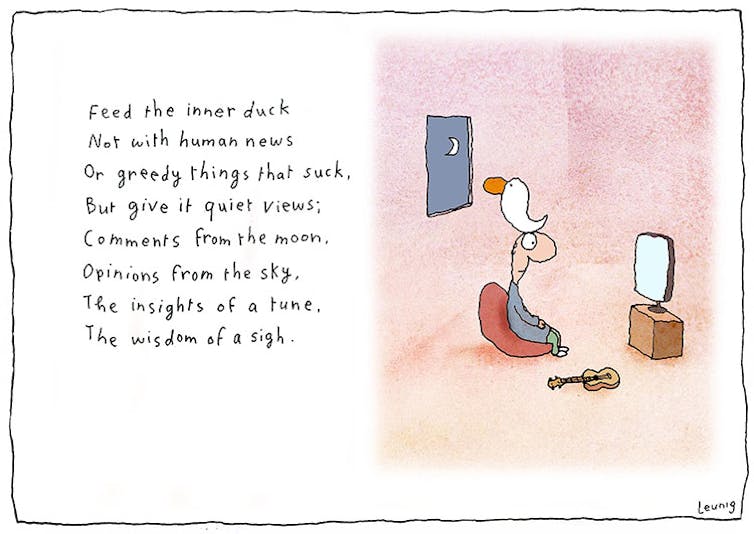
Another thread is the dark satirist.
In the 1960s and 1970s, he broke onto the scene as a wild man in Oz, the Sunday Observer and the Nation Review who deplored Vietnam and only escaped the draft owing to deafness in one ear.
Then he apparently mellowed to become the guru of The Age, still with a capacity to launch the occasional satirical thunderbolt. Decidedly countercultural, together with Patrick Cook and Peter Nicholson, Leunig brought what historian Tony Moore has called “existential and non-materialist themes to the Australian black-and-white tradition”.
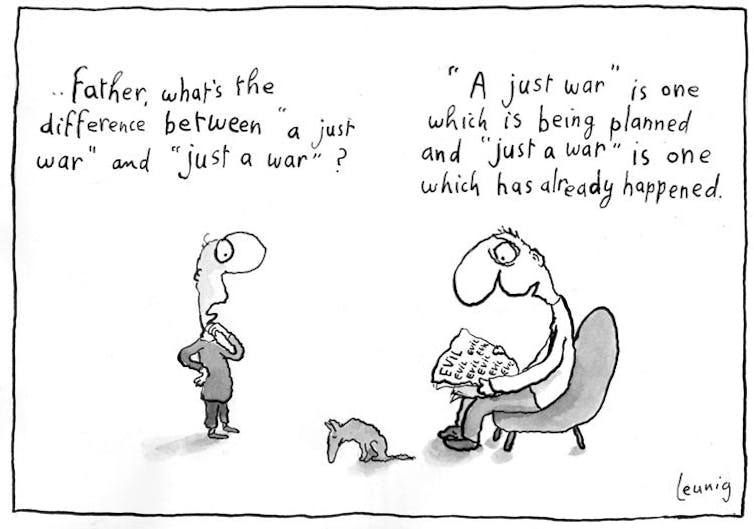
By 1999, he was declared a “national living treasure” by the National Trust, and was being lauded by universities for his unique contributions to the national culture.
But to tell the story of Leunig’s significance from the mid 90s on is to go beyond the dreamer and the duck. In later decades you could see a clear distinction between some cartoons that continued to console in a bewildering world, and others that sparked controversy.
Politics and controversy
Leunig saw 9/11 and the ensuing “War on Terror” as the great turning point in his career. He fearlessly returned to the themes of the Vietnam years, only to receive caution, rebuke and rejection from editors and readers.
He stopped drawing Mr Curly and Vasco Pyjama. The world was no longer safe for the likes of them.
Then there was a cartoon refused by The Age in 2002, deemed by editor Michael Gawenda to be inappropriate: in the first frame, a Jew is confronted by the gates of the death camp: “Work Brings Freedom [Arbeit Macht Frei]”; in the second frame an Israeli viewing a similar slogan “War Brings Peace”.
Rejected, it was never meant to see the light of day, but ABC’s Media Watch and Crikey outed it because of the constraint its spiking represented to fair media comment on the Middle East.
That the cartoon was later entered, without Leunig’s knowledge, in the infamous Iranian “Holocaust Cartoon” competition of 2006, has only added to its infamy and presaged the internet’s era of the uncontrollable circulation of images.
A decade later, from 2012, he reworked Martin Niemöller’s poetic statement of guilt over the Holocaust. The result was outrage, but also acute division within the Australian Jewish community.
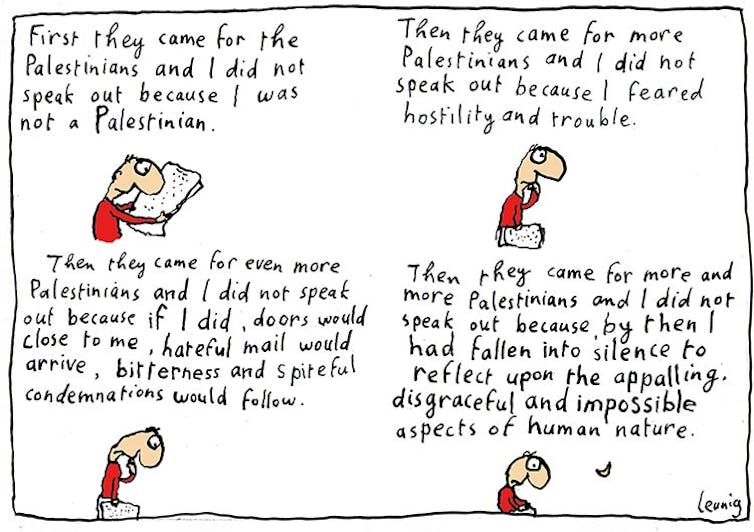
Dvir Abramovich (chairperson of the Anti-Defamation Commission) made a distinction between something challenging, and something racist, believing it was the latter.
Harold Zwier (of the Australian Jewish Democratic Society) welcomed the chance for his community to think critically about Israel’s policies in Gaza and the West Bank.
From 2019 — a mother, distracted, looking at her phone rather than her baby. Cries of “misogyny”, including from Leunig’s very talented cartoonist sister, Mary.
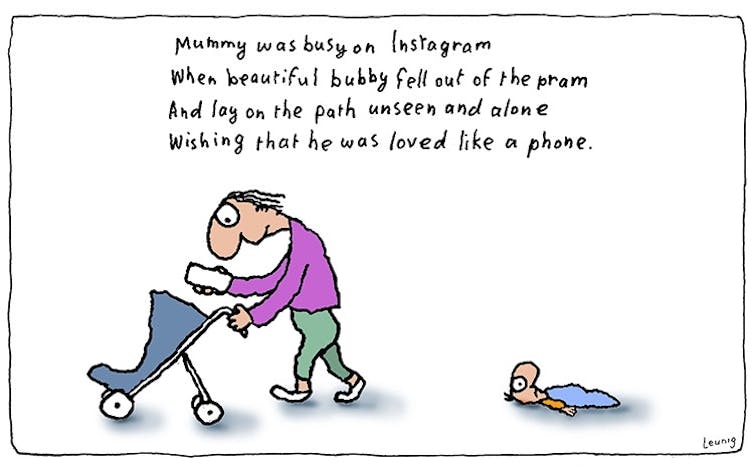
Then from 2021 — a covid-19 vaccination needle atop an armoured tank, rolling towards a helpless citizen.
Leunig’s enforced retirement (it is still debated whether he walked or was pushed) was long and drawn-out. He filed his last cartoon for The Age this August. By then, he had alienated more than a few of his colleagues in the press and the cartooning profession.
Support of the downtrodden
Do we speak ill of the dead? We hope not. Instead, we hope we are paying respect to a great and often angry artist who wanted always to challenge the consumer society with its dark cultural and geopolitical secrets.
Leunig’s response was a single line of argument: he was “Just a cartoonist with a moral duty to speak”.
You don’t have to agree with every provocation, but his purpose is always to take up the cause of the weak, and deploy all the weaponry at his disposal to support the downtrodden in their fight.
“The role of the cartoonist is not to be balanced”, said Leunig, but rather to “give balance”.
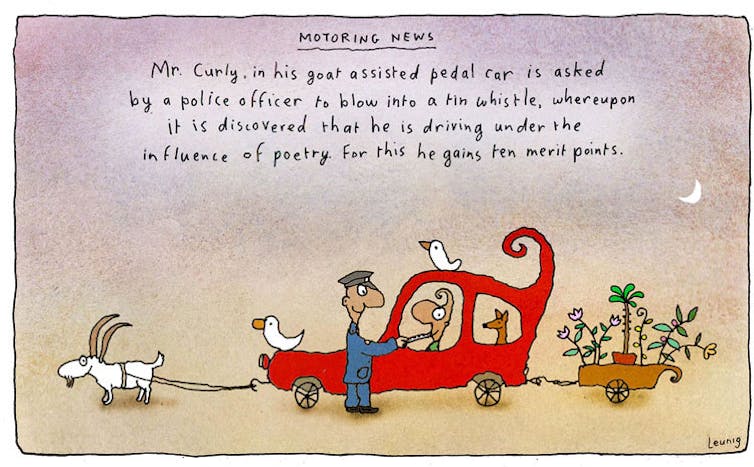
For Leunig, the weak were the Palestinian civilians, the babies of the post-iPhone generation, and those forced to be vaccinated by a powerful state; just as they were the Vietnamese civilians, the children forced to serve their rulers through state-sanctioned violence, the citizens whose democracy was undercut by stooges of the establishment.
That deserves to be his legacy, regardless of whether you agree or not about his stance.
The coming year will give a great many people pause to reflect on the life and work of Leunig. Indeed, he has provided us with a monthly schedule for doing just that: Leunig may be gone, but 2025 is already provided for, via his last calendar.![]()
Dr Richard Scully, professor in modern history, University of New England; Dr Robert Phiddian, professor of English, Flinders University, and Dr Stephanie Brookes, senior lecturer, School of Media, Film and Journalism, Monash University. This article is republished from The Conversation under a Creative Commons licence. Read the original article.
This content originally appeared on Asia Pacific Report and was authored by Pacific Media Watch.
This post was originally published on Radio Free.
Keith Poulsen’s jaw dropped when farmers showed him images on their cellphones at the World Dairy Expo in Wisconsin in October. A livestock veterinarian at the University of Wisconsin, Poulsen had seen sick cows before, with their noses dripping and udders slack. But the scale of the farmers’ efforts to treat the sick cows stunned him. They showed videos of systems they built to hydrate…
This post was originally published on Latest – Truthout.
The United States has vetoed a UN Security Council ceasefire resolution — for the fourth time — in Israel’s war on Gaza, while Hezbollah demands a complete ceasefire and “protection of Lebanon’s sovereignty” in any deal with Israel. Amid the death and devastation, Joe Hendren reflects on his time in Lebanon and examines what the crisis means for a small country with a population size similar to Aotearoa New Zealand.
SPECIAL REPORT: By Joe Hendren
Since the Israeli invasion of Lebanon I can’t help but think of a friend I met in Beirut.
He worked at the Regis Hotel, where I stayed in February 2015.
At one point, he offered to make me a Syrian dish popular in his hometown of Aleppo. I have long remembered his kindness; I only wish I remembered his name.
At the time, his home city was being destroyed. A flashpoint of the Syrian Civil War, the Battle of Aleppo lasted four long years. He didn’t mention this of course.
I was lucky to visit Lebanon when I did. So much has happened since then.
Economic crisis and a tragic port explosion
Mass protests took over Lebanese streets in October 2019 in response to government plans to tax WhatsApp calls. The scope of the protests soon widened, as Lebanese people voiced their frustrations with ongoing economic turmoil and corruption.
A few months later, the covid-19 pandemic arrived, deepening the economic crisis and claiming 10,000 lives.
On 4 August 2020, the centre of Beirut was rocked by one of the largest non nuclear explosions in history when a large amount of ammonium nitrate stored at the Port of Beirut detonated. The explosion killed 218 people and left an estimated 300,000 homeless. The government of Hassin Diab resigned but continued in a “caretaker” capacity.
Tens of thousands of protesters returned to the streets demanding accountability and the downfall of Lebanon’s political ruling class. While some protesters threw stones and other projectiles, an Al Jazeera investigation found that security forces violated international standards on the use of force. The political elite were protected.
In 2021, The World Bank summarised the situation:
“The Lebanon financial and economic crisis is likely to rank in the top 10, possibly top three, most severe crises episodes globally since the mid-nineteenth century. This is a conclusion of the Spring 2021 Lebanon Economic Monitor (LEM) in which the Lebanon crisis is contrasted with the most severe global crises episodes as observed by Reinhart and Rogoff (2014) over the 1857–2013 period.
“In fact, Lebanon’s GDP plummeted from close to US$ 55 billion in 2018 to an estimated US$ 33 billion in 2020, with US$ GDP/capita falling by around 40 percent. Such a brutal and rapid contraction is usually associated with conflicts or wars.”
The Lebanon Poverty and Equity Assessment, produced by the World Bank in 2024, found the share of individuals in Lebanon living under the poverty line more than tripled, rising from 12 percent to 44 percent. The depth and severity of poverty also increased over the decade between 2012 and 2022.
To make matters worse, the port explosion destroyed Lebanon’s strategic wheat reserves at a time when the war in Ukraine drove significant increases in global food prices. Annual food inflation in Lebanon skyrocketed from 7.67 percent in January 2019 to a whopping 483.15 percent for the year ending in January 2022. While food inflation has since declined, it remains high, sitting just below 20 percent for the year ending September 2024. The World Bank said:
“The sharp deterioration of the Lebanese pound, which lost 98 percent of its pre-crisis value by December 2023, propelled inflation to new heights. With imports constituting about 60 percent of the consumption basket (World Bank, 2022), the plunging currency led to triple-digit inflation which rose steeply from an annual average of 3 percent between 2011 and 2018, to 85 percent in 2019, 155 percent in 2020, and 221 percent in 2023 . . .
“Faced with falling foreign exchange reserves, the government withdrew subsidies on medication, fuel, and wheat further fuelling rising costs of healthcare and transport (Figure 1.2). Rapid inflation acted effectively as a highly regressive tax, striking hardest at the poor and those with fixed, lira-denominated incomes.”
The ongoing crisis of the Lebanese economy has amplified the power of Hezbollah, a paramilitary group formed in 1982 in response to Israel’s invasion and occupation of Lebanon.
“Hezbollah is famous for entrenching its power in an elaborate social infrastructure of Islamic welfare. The social grip of those structures and services is increased by the ongoing crisis of the Lebanese economy. When the medical service fails, desperate families turn to the Hezbollah-run health service,” says Adam Tooze
As banks imposed capital controls, many Lebanese lost confidence in the financial system. The financial arm of Hezbollah, the al-Quad al-Hassan Association (AQAH), experienced a significant increase in clients, despite being subject to US Treasury sanctions since 2007.
The US accuses Hezbollah of using AQAH as a front to manage its financial activities. When a 28-year-old engineer, Hassan Shoumar, was locked out of his dollar accounts in late 2019, he redirected his money into his account at AQAH: “What I care about is that when I want my money, I can get it.”
While Hezbollah portrays itself as “the resistance”, as a member of the governing coalition in Lebanon, it also forms an influential part of the political elite. Adam Tooze gives an example of how the political elite is still looking after itself:
“[T]he Lebanese Parliament in a grotesque act of self-dealing in January 2024 passed a budget that promised to close the budget deficit of 12.8 of GDP by raising regressive value-added tax while decreasing the progressive taxes levied on capital gains, real estate and investments.
“For lack of reforms, the IMF [International Monetary Fund] is refusing to disburse any of the $3bn package that are allocated to Lebanon.”
While the protest movement called for a “technocratic” government in Lebanon, the experiences of Greece and other countries facing financial difficulties suggest such governments can pose their own risks, especially when they involve unelected “experts” in prominent positions.
One example is the political reaction to the counterproductive austerity programme imposed on Greece by the European Commission, European Central Bank and IMF in the aftermath of the 2007-2008 financial crisis. This demonstrates how the demands of international investors can conflict with the needs of the local population.
Lebanon carries more than its fair share of refugees
Lebanon currently hosts the largest number of refugees per capita in the world, despite its scarce resources. This began as an overflow from the Syrian conflict in 2011, with nearly 1.2 million ‘displaced’ Syrians in Lebanon registered with UNHCR by May 2015.
When I visited Lebanon in 2015, I tried to grasp the scale of the refugee issue. In terms of population, Lebanon is comparable to New Zealand, with both countries having just over 5 million people.
I imagined what New Zealand would be like if it attempted to host a million refugees in addition to its general population. Yet in terms of land area Lebanon is only 10,400 square kilometres — about the size of New Zealand’s Marlborough region at the top of the South Island.
Now, imagine accommodating a population of over 5 million in such a small space, with more than a fifth of them being refugees.
While it was encouraging to see New Zealand increase its refugee quota to 1500 places in July 2020, we could afford to do much more in the current situation. This includes creating additional visa pathways for those fleeing Gaza and Lebanon.
#BREAKING
United States VETOES Security Council draft resolution that would have demanded an immediate, unconditional and permanent ceasefire in Gaza, and the release of all hostagesRESULT
In Favor: 14
Against: 1 (US)
Abstain: 0 pic.twitter.com/BpUj5xhJHE— UN News (@UN_News_Centre) November 20, 2024
On top of all that – Israeli attacks and illegal booby traps
Since the Hamas attack on Israel on October 7, 2023, and the ongoing Israeli invasion of Gaza, Israel and Hezbollah have exchanged fire across Lebanon’s southern border.
Israel makes much of the threat of rocket attacks on Israel from Hezbollah. However, data from US based non-profit organisation Armed Conflict Location and Event Data (ACLED) shows Israel carried out 81 percent of the 10,214 attacks between between the two parties from October 7, 2023, and September 20, 2024.
These attacks resulted in 752 deaths in Lebanon, including 50 children. In contrast, Hezbollah’s attacks, largely centred on military targets, killed at least 33 Israelis.
Hezbollah continues to offer an immediate ceasefire, so long as a ceasefire also applies to Gaza, but Israel has refused these terms.
While the Israeli Defence Force (IDF) disputed these figures as an “oversimplification”, the IDF do not appear to dispute the reported number of Lebanese casualties. Hezbollah continues to offer an immediate ceasefire, so long as a ceasefire also applies to Gaza, but Israel has refused these terms.
In a further escalation, thousands of handheld pagers and walkie-talkies used in both civilian and military contexts in Lebanon and Syria suddenly exploded on September 17 and 18.
Israel attempted to deny responsibility, with Israeli President Isaac Herzog claiming he “rejects out of hand any connection” to the attack. However, 12 defence and intelligence officials, briefed on the attack, anonymously confirmed to The New York Times that Israel was behind the operation.
Israeli Prime Minister Benjamin Netanyahu later boasted during a cabinet meeting that he had personally approved the pager attack. The New York Times described the aftermath:
“Powered by just a few ounces of an explosive compound concealed within the devices, the blasts sent grown men flying off motorcycles and slamming into walls, according to witnesses and video footage. People out shopping fell to the ground, writhing in agony, smoke snaking from their pockets.”
The exploding devices killed 42 people and injured more than 3500, with many victims losing one or both of their hands or eyes. At least four of the dead were children.
Lebanese Prime Minister Najib Mikatri called the explosions “a serious violation of Lebanese sovereignty and a crime by all standards”.
While around eight Hezbollah fighters were among the dead, most of those killed worked in administration roles and did not take part in hostilities. Under international humanitarian law targeting non-combatants is illegal.
Additionally, the UN Protocol on Mines, Booby-Traps and Other Devices also prohibits the use of “booby-traps or other devices in the form of apparently harmless portable objects which are specifically designed and constructed to contain explosive material”. Israel is a signatory to this UN Protocol.
Israel’s decision to turn ordinary consumer devices into illegal booby traps could backfire. While Israel frequently stresses the importance of its technology sector to its economy, who is going to buy technology associated with Israel now that the IDF have demonstrated its ability to indiscriminately weaponise consumer devices at any time?
International industry buyers will source elsewhere. Such a “silent boycott” could give greater momentum to the call from Palestinian civil society for boycotts, divestments and economic sanctions against Israel.
The booby trap pagers are also likely to affect the decisions of foreign airlines to service Israel on the grounds of safety. Since the war began in October 2023, the number of foreign airlines calling on Ben Gurion Airport in Israel has fallen significantly. Consequently, the cost of a round-trip ticket from the United States to Tel Aviv has risen sharply, from approximately $900 to $2500.
Israel targets civilian infrastructure in Lebanon
Israel has also targeted civilian organisations linked to Hezbollah, such emergency services, hospitals and medical centres operated by the Islamic Health Society (IHS). Israel claims Hezbollah is “using the IHS as a cover for terrorist activities”. This apparently includes digging people out of buildings, as search and rescue teams have also been targeted and killed.
Israel accuses the microloan charity AQAH of funding “Hezbollah’s terror activities”, including purchasing weapons and making payments to Hezbollah fighters. On October 20, Israel attacked 30 branches of AQAH across Lebanon, drawing condemnation from both Amnesty International and the United Nations.
Ben Saul, UN Special Rapporteur on Human Rights and Counter-terrorism maintains AQAH is not a lawful military target: “International humanitarian law does not permit attacks on the economic or financial infrastructure of an adversary, even if they indirectly sustain its military activities.”

On top of all that — an Israeli invasion
In 1982, Israel attempted to use war to alter the political situation in Lebanon, with counterproductive results, including the creation of Hezbollah. In 2006, Hezbollah used the hilly terrain of southern Lebanon to beat Israel to a stalemate. Israel risks similar counterproductive outcomes again, at the cost of many more lives.
Yet on 1 October 2024, Israel launched a ground invasion of Lebanon, alongside strikes on Beirut, Sidon and border villages. The IDF confirmed the action on Twitter/X, promising a “limited, localised and targeted” operation against “Hezbollah terrorist targets” in southern Lebanon. One US official noted that Israel had framed its 1982 invasion as a limited incursion, which eventually turned into an 18-year occupation.
Israeli strikes have since expanded all over the country. According to figures provided by the Lebanese Ministry of Public Heath on November 13, Israel is responsible for the deaths of at least 3365 people in Lebanon, including 216 children and 192 health workers. More than 14,000 people have been wounded, and more than one million have been displaced from their homes.
Since September 30, 47 Israeli troops have been killed in combat in Southern Lebanon. Around 45 civilians in northern Israel have died due to rocket fire from Lebanon.
So, on top of an economic crisis, runaway inflation, unaffordable food, increasing poverty, the port explosion and covid-19, the Lebanese people now face a war that shows little signs of stopping.
Analysts suggest there is little chance of a ceasefire while Israel retains its “maximalist” demands, which include a full surrender of Hezbollah and allowing Israel to continue to attack targets in southern Lebanon.
A senior fellow at the Carnegie Middle East Center in Beirut, Mohanad Hage Ali, believes Israel is feigning diplomacy to push the blame on Hezbollah. The best chance may come alongside a ceasefire in Gaza, but Israel shows little signs of negotiating meaningfully on that front either.
On September 26, the Lebanese Foreign Minister Abdallah BouHabib summarised the mood of the country in the wake of the pager attack:
“[N]obody expected the war to be taken in that direction. We Lebanese—we’ve had enough war. We’ve had fifteen years of war. . . .We’d like to live without war—happily, as a tourist country, a beautiful country, good food—and we are not able to do it. And so there is a lot of depression, especially with the latest escalation.”
In Aotearoa New Zealand, the Māori phrase “Kia kaha” means “stand strong”. If I could send a message from halfway across the world, it would be: “Kia kaha Lebanon. I look forward to the day I can visit you again, and munch on a yummy Za’atar man’ousheh while admiring the view from the beautiful Corniche Beirut.”
Joe Hendren holds a PhD in international business from the University of Auckland. He has more than 20 years of experience as a researcher, including work in the New Zealand Parliament, for trade unions and on various research projects. This is his first article for Asia Pacific Report. His blog can be found at http://joehendren.substack.com
Where I ate my Za’atar man’ousheh – Pigeon’s Rock, Corniche Beiruit
This post was originally published on Asia Pacific Report.
Whistleblowing citizen journalist Zhang Zhan has been re-detained, three months after her release following a four-year jail term for reporting from the front lines of the emerging COVID-19 pandemic in Wuhan, her brother told RFA Mandarin.
“All I know is that she’s in the detention center right now,” Zhang’s brother Zhang Ju said. “I don’t know many other details; nobody contacted me when she went in.”
“They may have contacted my father or mother, but they didn’t tell me; I don’t know why she’s been taken there on this occasion,” he said.
Repeated calls to Zhang’s parents rang unanswered on Sept. 5. U.K.-based rights activist Wang Jianhong, who heads the Zhang Zhan Concern Group, said the family is under pressure from the authorities not to speak to anyone about their daughter’s case.
“There haven’t been any updates in the past few days because it’s inconvenient for the family to speak out – their situation is very difficult,” Wang said. “The news that she is in the detention center has been confirmed and made public.”
“There has been no official notification that she has been criminally detained, but given that she’s being held in a regular detention center for eight days, it’s probably criminal rather than administrative detention,” Wang said, calling on Washington to raise Zhang’s detention with the Chinese authorities “through diplomatic channels.”

Shanghai-based rights lawyer Peng Yonghe said there was nobody at the address where Zhang had been living following her release from Shanghai Women’s Prison on May 13.
“I went to where she used to live but didn’t find anyone there,” Peng said. “I also tried to reach out to her mother on WeChat, but she didn’t reply, for whatever reason.”
‘A violent system’
The U.S. Congressional-Executive Commission on China said via its X account on Sept. 3 that it had received reports of Zhang’s detention in connection with attempts to help a fellow activist in the western province of Gansu.
“Citizen-journalist #ZhangZhan, formerly jailed for her reporting on #COVID19 transmission in Wuhan, was reportedly detained by Shanghai police because she sought to aid a jailed activist in Gansu,” the Commission said. “Chairs urge @USA_China_Talk to monitor this case and inquire about her safety.”
Zhang made a statement via her YouTube account on July 25 highlighting the case of Gansu activist Zhang Pancheng, who remains under house arrest following his release from prison in March, along with those of two other people.
“I want to ask the police why they are using illegal methods to strip these people of their right to go about their lives,” Zhang said. “This is an attack on justice and an attack on the vulnerable.”
“You are part of a violent system,” she said.

Calls to Zhang’s local Xuanqiao police station and the Shanghai Pudong New Area Detention Center resulted in calls being transferred to different departments, but no concrete information.
The Chinese embassy in Washington hadn’t responded to a written request for comment by the time of publication on Sept. 5.
European Union foreign affairs spokesperson Nabila Massrali also commented via X: “The EU is concerned about reports that Chinese citizen journalist Zhang Zhan has been detained again and held at Shanghai Pudong Detention Center.”
“We call for her immediate and unconditional release and reiterate our earlier concerns about her wellbeing & health,” Massrali said.
Supporter also detained
Meanwhile, authorities in the central city of Changsha hauled in a woman, named as Duan Taoyuan, for holding up a sign in support of Zhang.
Duan is being held under a 10-day administrative sentence, an officer from her local Dongjing police station appeared to confirm social media reports as saying.
Asked when the notification of her detention would be sent to family members, the officer replied: “It won’t be that quick, because it’s the weekend. Maybe in the next few days.”
The Weiquanwang rights website reported on Monday that Duan is currently being held in the Changsha Detention Center, where she is serving a 10-day administrative sentence.
A person familiar with the case who declined to be named for fear of reprisals confirmed the report in an interview with RFA Mandarin.

Zhang, 40, was sentenced to four years’ imprisonment by Shanghai’s Pudong District People’s Court on Dec. 28, 2020, convicted of “picking quarrels and stirring up trouble,” a charge frequently used to target critics of the ruling Chinese Communist Party.
She was hospitalized last year for digestive diseases linked to malnutrition following several months of hunger strikes.
At her trial, Zhang was accused of “fabricating” two items in her reporting from Wuhan.
The first was that citizens were forced to pay a fee to get nucleic acid tests for COVID-19, and the second was that residents confined to their homes under a city-wide lockdown had been sent rotten vegetables by neighborhood committees.
Zhang said she admitted to all of the material facts of the case, but refused to plead guilty to the charge, saying that the information she posted wasn’t false.
Translated by Luisetta Mudie.
This content originally appeared on Radio Free Asia and was authored by By Jenny Tang, Qian Lang and Huang Chun-mei for RFA Mandarin.
This post was originally published on Radio Free.
This summer’s COVID-19 wave has gotten so bad — even worse than winter peaks in some regions — the U.S. Food and Drug Administration (FDA) announced they are approving two vaccines early, but leaving one out for now. On Thursday, the agency used its emergency use authorization (EUA) to rubber stamp a group of updated mRNA vaccines produced by Moderna and Pfizer-BioNTech. They inoculate against the…
This post was originally published on Latest – Truthout.
At the height of the pandemic, COVID-19 was talked about as “the great equalizer,” an idea touted by celebrities and politicians from Madonna to then-New York Gov. Andrew Cuomo. But that was a myth.
Ibram X. Kendi and Boston University’s Center for Antiracist Research worked with The COVID Tracking Project to compile national numbers on how COVID-19 affected people of color in the U.S. Their effort, The COVID Racial Data Tracker, showed that people of color died from the disease at around twice the rate of White people.
The COVID Tracking Project’s volunteer data collection team waited months for the Centers for Disease Control and Prevention to release COVID-19 testing data. But when the CDC finally started publishing the data, it was different from what states were publishing—in some instances, it was off by hundreds of thousands of tests. With no clear answers about why, The COVID Tracking Project’s quest to keep national data flowing every day continued until March 2021.
This week on Reveal: We examine the myth of COVID-19 as “the great equalizer,” what went wrong in the CDC’s response to the pandemic, and whether it’s prepared for the next one.
This Peabody Award-nominated three-part series is hosted by epidemiologist Jessica Malaty Rivera and reported by Artis Curiskis and Kara Oehler from The COVID Tracking Project at The Atlantic.
This post was originally published on Reveal.
In March 2020, health care technologist Amy Gleason had a daunting task ahead of her. She was a new member of the White House Coronavirus Task Force’s data team, and it was her job to figure out where people were testing positive for COVID-19 across the country, how many were in hospitals, and how many had died from the disease.
Gleason was shocked to find that data from the Centers for Disease Control and Prevention wasn’t reflecting the immediate impact of the coronavirus. At the same time, the country was suffering from another huge shortfall: a lack of COVID-19 tests. The task force also faced national shortages of medical supplies like masks and ventilators and lacked basic information about COVID-19 hospitalizations that would help them know where to send supplies.
Realizing that the federal government was failing to collect national data, reporters at The Atlantic formed The COVID Tracking Project. Across all 50 states, hundreds of volunteers began gathering crucial information on the number of cases, deaths, and hospitalizations. Each day, they compiled the state COVID-19 data in a massive spreadsheet, creating the nation’s most reliable picture of the spread of the deadly disease.
This week on Reveal: The second episode of our three-part series asks why there was no good federal data about COVID-19. This Peabody Award-nominated series is hosted by epidemiologist Jessica Malaty Rivera and reported by Artis Curiskis and Kara Oehler from The COVID Tracking Project at The Atlantic.
This is an update of an episode that originally aired in April 2023.
Connect with us on Twitter, Facebook and Instagram
This post was originally published on Reveal.
The Prime Minister’s top scientific advisers are backing a multi-faceted response to airborne infections with air quality interventions that can be tailored to specific buildings like hospitals or classrooms to guard against the next pandemic. Their advice, released this week, sets up a complex policy challenge stretching across portfolios, jurisdictions, health systems and sectors, but…
The post Indoor air quality shapes as pandemic-sized policy challenge appeared first on InnovationAus.com.
This post was originally published on InnovationAus.com.
The United States has 4% of the world’s population but more than 16% of COVID-19 deaths.
Back in February 2020, reporters Rob Meyer and Alexis Madrigal from The Atlantic were trying to find solid data about the rising pandemic. They published a story that revealed a scary truth: The U.S. didn’t know where COVID-19 was spreading because few tests were available. The Centers for Disease Control and Prevention also didn’t have public data to tell citizens or federal agencies how many people were infected or where the outbreaks were happening.
Their reporting led to a massive volunteer effort by hundreds of people across the country who gathered the data themselves. The COVID Tracking Project became a de facto source of data amid the chaos of COVID-19. With case counts rising quickly, volunteers scrambled to document tests, hospitalizations, and deaths in an effort to show where the virus was and who was dying.
This week on Reveal: We investigate the failures by federal agencies that led to over 1 million Americans dying from COVID-19 and what that tells us about the nation’s ability to fight the next pandemic.This Peabody Award-nominated three-part series is hosted by epidemiologist Jessica Malaty Rivera and reported by Artis Curiskis and Kara Oehler from The COVID Tracking Project at The Atlantic.
This is an update of an episode that originally aired in April 2023.
Take our listener survey
This post was originally published on Reveal.
North Korea has ordered the return of workers who were dispatched to China to earn money for the regime, a document obtained by Radio Free Asia shows.
Experts told RFA that the order is intended to bring back women in their 30s who missed out on getting married because they were stuck in China during the pandemic. The typical age in North Korea for women to be married is around 26, according to the South Korea-based media outlet Daily NK, which cited a study by the South Korean Ministry of Unification.
The orders, which are believed to have been issued in May and June, were sent out to embassies and consulates in China. The repatriation should be “thoroughly executed without any conditions or excuses,” the announcement states.
The women now being called home likely put off marriage to accept their overseas assignments, which are a crucial economic resource for the country that is under heavy international economic sanctions. These jobs typically last only a year or two, but those sent prior to the pandemic have now been abroad for more than four years.

J.M. Missionary Union, a South Korean organization that executes rescue missions for North Korean escapees in China, said many of the women likely work in North Korea-themed restaurants.
Related RFA Content
‘I want to be myself, not someone’s mom.’
Coronavirus Strands North Korean Workers in China, Kills Job Offers
North Korea brings home around 700 of its workers from China and Russia
These restaurants are often staffed by women who in addition to serving food pull double duty as singers and dancers to entertain diners.
The repatriation effort is part of the country’s plans to encourage more marriages to counter the country’s declining birthrate, Cho Han Bum, a researcher at the South Korea-based Korea Institute for National Unification, told RFA Korean.
“There is a problem raised within North Korea that female workers dispatched overseas missed their marriageable age,” Cho said. “This is why Kim Jong Un attended the Fifth National Meeting of Mothers at the end of last year.”
At that meeting, Kim Jong Un was brought to tears as he pleaded with North Korea’s women to have more children.
South Korea’s Dong-A Ilbo newspaper reported this week that the Chinese government had requested all North Korean workers return home, suggesting it was designed to show Beijing’s unhappiness at Pyongyang’s effort to forge closer ties with Russia.
However, the Chinese Ministry of Foreign Affairs denied it had made the request.
“China and North Korea are neighbors connected by mountains and water and have always maintained traditional friendly and cooperative relations,” Chinese Foreign Ministry spokesperson Lin Jian said at a news conference.
He equated reports of a deterioration of Sino-North Korean relations as a fiction. “I hope they don’t write news like it is a novel,” Lin said.
Seo Jae-pyoung, head of the Seoul-based Association of the North Korean Defectors, told RFA, that China does not want to be seen as openly violating U.N. sanctions barring North Koreans from working abroad, because penalties for doing so could damage its own poor economy.
North Korea’s desire to swap some of its older workers with younger replacements could draw unwanted attention to the practice, he said.
“China is in the position that all North Korean workers should leave first,” he said. “So, it appears that a ‘battle of wits’ is going on between them.”
Translated by Claire S. Lee and Leejin J. Chung. Edited by Eugene Whong and Jim Snyder.
This content originally appeared on Radio Free Asia and was authored by By Mok Yongjae, Kim Jieun and Son Hyemin for RFA Korean.
This post was originally published on Radio Free.
In the ongoing waves of bird flu outbreaks, with the virus spreading to more than 141 herds in 12 states, the risk of another full-blown pandemic like COVID-19 is becoming a distinct possibility. In preparation for just such a disaster, the U.S. government will pay pharmaceutical company Moderna $176 million to develop a vaccine that protects against the H5N1 virus. Moderna will employ the same…
This post was originally published on Latest – Truthout.
This content originally appeared on Democracy Now! and was authored by Democracy Now!.
This post was originally published on Radio Free.

The U.S. military ran a secret anti-vaccination campaign at the height of the pandemic in the Philippines and other nations to sow doubt about COVID vaccines made by China, according to a new investigation by Reuters. The clandestine Pentagon campaign, which began in 2020 under Donald Trump and continued into mid-2021 after Joe Biden took office, relied on fake social media accounts on multiple platforms to target local populations in Southeast Asia and beyond. The campaign also aimed to discredit masks and test kits made in China. “Within the Pentagon, within Washington, there was this fear that they were going to lose the Philippines” to Chinese influence, says Joel Schectman, one of the reporters who broke the story. Schectman says that while it’s impossible to measure the impact of the propaganda effort, it came at a time when the Chinese-made Sinovac shot was the only one available in the Philippines, making distrust of the vaccine “incredibly harmful.”
This content originally appeared on Democracy Now! and was authored by Democracy Now!.
This post was originally published on Radio Free.

The U.S. military ran a secret anti-vaccination campaign at the height of the pandemic in the Philippines and other nations to sow doubt about COVID vaccines made by China, according to a new investigation by Reuters. The clandestine Pentagon campaign, which began in 2020 under Donald Trump and continued into mid-2021 after Joe Biden took office, relied on fake social media accounts on multiple platforms to target local populations in Southeast Asia and beyond. The campaign also aimed to discredit masks and test kits made in China. “Within the Pentagon, within Washington, there was this fear that they were going to lose the Philippines” to Chinese influence, says Joel Schectman, one of the reporters who broke the story. Schectman says that while it’s impossible to measure the impact of the propaganda effort, it came at a time when the Chinese-made Sinovac shot was the only one available in the Philippines, making distrust of the vaccine “incredibly harmful.”
This content originally appeared on Democracy Now! and was authored by Democracy Now!.
This post was originally published on Radio Free.
This content originally appeared on VICE News and was authored by VICE News.
This post was originally published on Radio Free.
Citizen journalist Fang Bin, who was jailed after filming from hospitals and funeral homes in the central Chinese city of Wuhan in the early days of the COVID-19 pandemic, is now homeless after being evicted from an apartment he rented just last month.
Fang, who was sentenced to three years’ imprisonment at a secret trial, was released last year and ordered back to Wuhan when he traveled to Beijing.
Back in Wuhan, Fang stayed for a while in Qiaokou district, where he was frequently questioned by local police as part of China’s “stability maintenance” system that targets dissidents and activists before they have a chance to do anything, prompting him to leave the area.
Before his detention on Feb. 1, 2020, Fang was among a number of high-profile bloggers who tried to report on the emerging and little-understood viral outbreak from Wuhan. He described the pandemic as a “man-made” disaster, calling on people to resist government “tyranny.”
He sent reports from Wuhan No. 5 Hospital and a funeral home in Wuchang, part of the three-city conurbation that makes up Wuhan, where he watched staff move out eight dead bodies in the space of five minutes, suggesting the death toll was far higher than the officially reported figure.
Last month, Fang found an apartment in Huangpi district, further out of town, and signed a one-year lease with a private landlord surnamed Ren on April 15, paying a year’s rent and service charges up front.
Three days later, local officials found out that he had moved into the area, and put pressure on the landlord to terminate his lease, he told RFA Mandarin in an interview on Wednesday.
The landlord told him he was being evicted, saying he couldn’t take the kind of pressure he was being put under.
“When [the authorities] found out that I’d moved to Huangpi from Qiaokou, they were against me living in Huangpi,” Fang said. “They put pressure on the landlord to evict me.”
“They cut off my power and water supply … They want me to leave,” he said. “I paid the rent and the service charge.”
Fang said unidentified people had used “every tactic they could think of” to put pressure on the landlord, who didn’t dare to say where the pressure was coming from.
“He said, ‘I can’t stand this any more — I’ll give you your money back,’” Fang said.
A ‘stability maintenance’ target
Repeated calls to the neighborhood committee at Shekoujie Sub-district Office rang unanswered during office hours on Wednesday.
Fang believes local officials there didn’t want him living in the district because he’s a “stability maintenance” target, whom they fear could cause trouble for them.
Fang left on April 27, then regained entry to the apartment the following day, only to have the water and power cut off on April 29, he said. Then someone tampered with the door lock, shutting Fang out of the apartment entirely.
“They think that my living here would be dangerous or troublesome for them, due to stability maintenance and so on,” he said. “They think I’ll cause them trouble, be another thing they are responsible for.”
Fang went incommunicado after a Feb. 1, 2020, livestream from Wuhan healthcare facilities, and made a couple more videos in the days that followed about his interrogation by police, before falling silent for three years, with no news of his fate.
He was sentenced in secret by the Jiang’an District People’s Court, which didn’t share any legal documents with his family, then served his sentence in the Xiaojunshan former juvenile correction facility, activists said at the time.
Fang’s disappearance came a few days after the detention of another citizen journalist, Chen Qiushi, who had been interviewing people involved with the new mega hospitals being built at great speed in Wuhan.
Fellow citizen journalist Kcriss Li continued reporting from the scene for a few more weeks after that, until his dramatic, live-streamed chase by police on Feb. 26.
Lawyer-turned-reporter Zhang Zhan was detained and taken back to Shanghai, where there are ongoing concerns about her health in prison following months of on-off hunger strikes and forced feeding.
The U.S. Congressional-Executive Commission on China called for Fang’s release in its annual report in November 2022, along with all those detained for reporting on the pandemic in China.
Translated by Luisetta Mudie. Edited by Roseanne Gerin.
This content originally appeared on Radio Free Asia and was authored by By Qian Lang for RFA Mandarin.
This post was originally published on Radio Free.
For weeks, the dairy industry has been gripped by a highly contagious virus that is threatening to only get worse. Federal regulators announced this week that samples of pasteurized milk tested positive for H5N1, the strain of bird flu that has jumped from poultry to cows with one recent infection in an American. At the moment, the U.S. Food and Drug Administration (FDA) reports that the country’s…
This post was originally published on Latest – Truthout.
The Centers for Disease Control and Prevention (CDC) announced this month that it has significantly weakened its COVID-19 guidance, reversing course in its recommendation of a five-day isolation period for people testing positive for the disease. The CDC’s new guidance states that people testing positive with COVID-19 only need to isolate for one day if they do not have a fever and symptoms are…
This post was originally published on Latest – Truthout.
Time is running out for media people and academics wanting to tell their innovative story or present research at the 2024 Pacific International Media Conference in July.
Organisers say the deadline is fast approaching for registration in less than two weeks.
Many major key challenges and core problems facing Pacific media are up for discussion at the conference in Suva, Fiji, on July 4-6 hosted by The University of the South Pacific (USP).

“Interest in the conference is very encouraging, both from our partners and from presenters — who are academics, professional practitioners and others who work in the fields of media and society,” conference chair Associate Professor Shailendra Singh of USP told Asia Pacific Report.
“Some very interesting abstracts have been received, and we’re looking forward to more in the coming days and weeks.”
The USP is partnered for the conference by the Pacific Islands News Association (PINA) and the Asia Pacific Media Network (APMN).
“There’s a lot to discuss — not only is this the first Pacific media conference of its kind in 20 years, there has been a lot of changes in the Pacific media sector, just as in the media sectors of just about every country in the world.
Media sector shaken
“Our region hasn’t escaped the calamitous impacts of the two biggest events that have shaken the media sector — digital disruption and the covid-19 pandemic.”
Both events had posed major challenges for the news media organisations and journalists — “to the point of even being an existential threat to the news media industry as we know it”.
“This isn’t very well known or understood outside the news media industry,” Dr Singh said.
The trends needed to be examined in order to “respond appropriately”.
“That is one of the main purposes of this conference — to generate research, discussion and debate on Pacific media, and understand the problems better.”
Dr Singh said the conference was planning a stimulating line-up of guest speakers from the Asia-Pacific region.
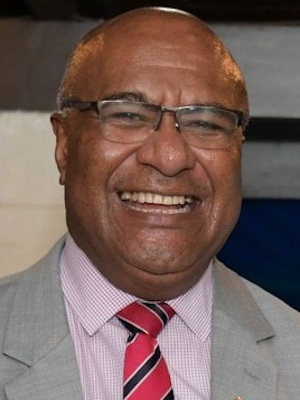
Chief guest
Chief guest is Fiji’s Deputy Prime Minister Manoa Kamikamica, who is also Communications and Technology Minister.
The abstracts deadline is April 5, panel proposals are due by May 5, and July 4 is the date for final full papers.
Key themes include:
Email abstracts to the conference chair: Dr Shailendra Singh
Full details at the conference website: www.usp.ac.fj/2024-pacific-media-conference/
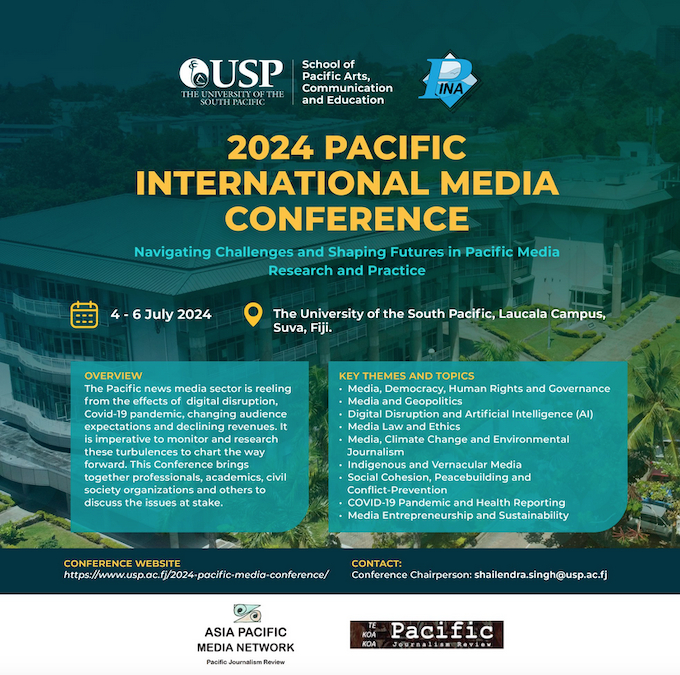
This post was originally published on Asia Pacific Report.
By Caleb Fotheringham, RNZ Pacific journalist
Surveillance and better vaccine coverage is needed to prevent another measles outbreak in the Pacific, says the World Health Organisation’s (WHO) Western Pacific regional director.
Dr Saia Ma’u Piukala said many children missed out on routine vaccinations — including measles and rubella — during the covid-19 pandemic.
According to WHO, measles cases jumped by 225 percent — from just over 1400 cases in 2022 to more than 5000 last year — in the Western Pacific region.
A statement from WHO said the recent increase has been caused by gaps in vaccination coverage and disease surveillance, and people travelling from countries with outbreaks.
“I think the health workforce were concentrating on covid-19 vaccinations and forgot about routine vaccinations, not only for measles, but other routine immunisation schedule,” Piukala told RNZ Pacific.
“People are going back to fill the gaps.”
From 2022 to 2023, 11 countries in the Western Pacific, including Fiji, Kiribati, Marshall Islands, the Federated States of Micronesia, Palau and Papua New Guinea, conducted nationwide measles and rubella vaccination campaigns.
Catch-up successful
Piukala said the catch-up campaigns had been successful.
“That will definitely reduce the risk,” he said.
“No child should get sick or die of measles.”
In 2019, Samoa had an outbreak that killed 83 people off the back of an outbreak in Auckland.
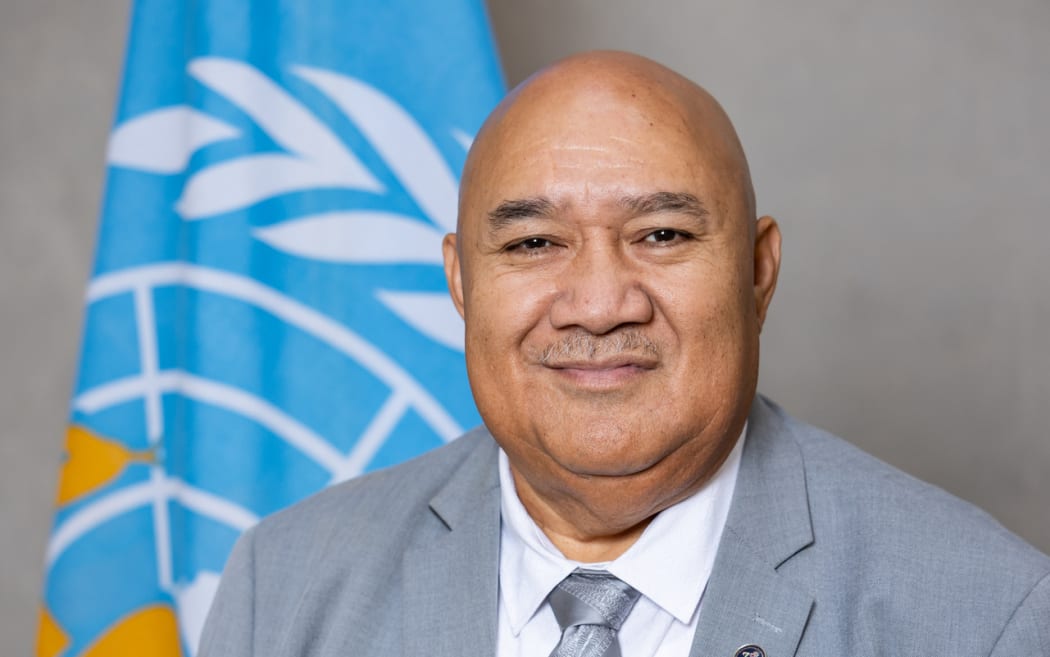
Piukala said the deaths made people understand the importance of measles and rubella vaccinations for their children.
Fiji, Guam, French Polynesia and New Caledonia are the only countries or territories that have local testing capacity for measles, with most nations sending samples to Melbourne for testing.
Piukala said WHO plans for Samoa, the Cook Islands, and the Solomon Islands to have testing capacity by 2025.
“The PCR machines that were made available in Pacific Island countries during the covid pandemic can also be used to detect other respiratory viruses, including the flu, LSV, and measles and rubella.”
This article is republished under a community partnership agreement with RNZ.
This content originally appeared on Asia Pacific Report and was authored by APR editor.
This post was originally published on Radio Free.